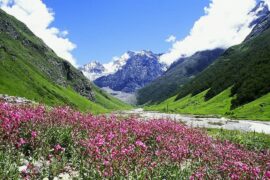Corbett & Rajaji National Park: Fee Hikes, Balancing Conservation & Tourism
India’s rich biodiversity and stunning landscapes have made it a prime destination for wildlife enthusiasts and nature lovers from around the world. Among its many natural treasures, Corbett National Park, Rajaji Tiger Reserve, and other protected areas have held a special place in the hearts of both domestic and international tourists. However, recent significant fee hikes for safaris, accommodation, and entry have sparked controversy and concern among various stakeholders.
Corbett National Park
The Corbett National Park, a haven for wildlife enthusiasts and photographers, recently implemented a substantial increase in safari fees, with the cost nearly tripling from Rs 950 to Rs 3,000. While the administration has justified this move as a long-overdue adjustment, it has raised the alarm among Gypsy drivers, who heavily depend on tourism for their livelihood. Their fears of a tourism downturn and its repercussions on their income are valid and need to be addressed.
Forest Rest House
Rates for accommodations at numerous forest rest houses (FRHs) in regions such as Corbett Tiger Reserve’s Pakhro range have experienced a significant surge, now reaching Rs 2,000 per day compared to the previous Rs 750. Moreover, day visit charges within the reserve have seen substantial increases, rising from Rs 100 to Rs 500 for Indian visitors and from Rs 900 to Rs 1500 for foreigners.
Notably, several FRHs have witnessed a sharp spike in rates, with the Khinnanauli FRH in the Dhikala zone of Corbett being a prime example. Rates for foreigners have escalated from Rs 8,000 per night to Rs 20,000 per night, while charges for domestic tourists have risen from Rs 5,000 to approximately Rs 8,000 per night.
Rajaji National Park Ticket Price 2023
In the Rajaji Tiger Reserve, the entry fee has doubled, increasing from Rs 150 to Rs 300 for Indian visitors and from Rs 600 to Rs 1200 for foreigners. Officials have justified these price hikes by citing the need for a revision after an extended period of nearly 14 years without any adjustments. “There had been no change in pricing since 2009,” stated an official.
Proponents of these fee hikes argue that the rates had remained stagnant for almost 14 years, necessitating a revision to accommodate rising costs and support conservation efforts. While this argument has its merits, it’s essential to strike a balance between the financial needs of conservation and the accessibility of these natural wonders to the public.
There’s no denying that revenue generated from tourism can play a crucial role in sustaining these protected areas and funding conservation initiatives. However, the abrupt and substantial fee hikes may indeed discourage tourism, potentially leading to a crisis for drivers, guides, and local businesses that rely on this sector. Moreover, these increases risk making these beautiful reserves exclusive and unaffordable for many.
To find a harmonious solution, it’s essential for the authorities to consider the following:
- Phased Increases: Instead of sudden, steep hikes, authorities could opt for gradual increases over a few years. This approach would provide tourists and tourism-dependent communities with time to adapt.
- Discounts for Locals: Offering reduced rates to local residents could ensure that these natural wonders remain accessible to those who live in close proximity and foster a sense of ownership and pride among the local population.
- Transparency and Accountability: The revenue generated from fee hikes should be transparently channeled into conservation efforts and local community development. This transparency can help build trust among tourists and local communities.
- Tourism Promotion: Aggressive marketing and promotional campaigns can help offset any initial decline in tourism due to the increased fees. Highlighting the unique wildlife and experiences these reserves offer can attract visitors even with higher costs.
- Community Involvement: Involving local communities in decision-making processes and revenue-sharing mechanisms can ensure that the economic benefits of tourism reach those who rely on it the most.
Conclusion
In conclusion, while fee hikes in India’s wildlife reserves may be necessary to support conservation efforts, they must be implemented thoughtfully and responsibly. The goal should be to strike a balance between generating revenue and ensuring that these natural treasures remain accessible to a wide range of visitors, benefiting both the environment and local communities. A collaborative and sustainable approach can help preserve these invaluable natural habitats for generations to come.




Comments are closed.